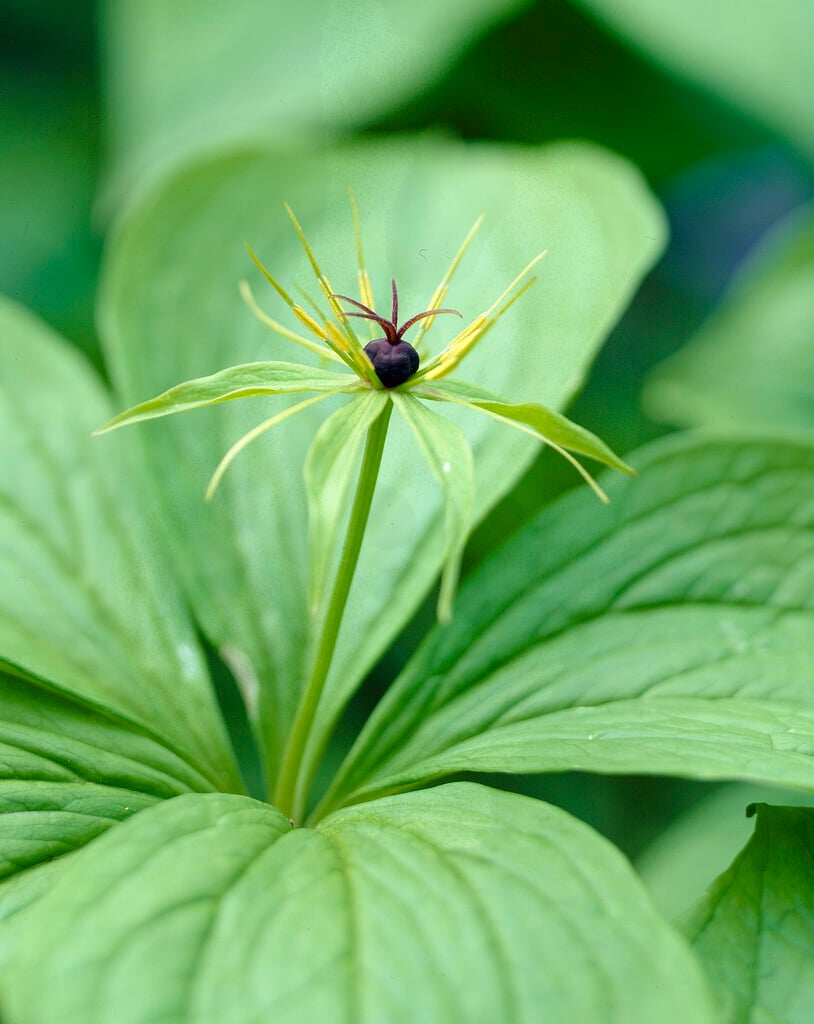Paris quadrifolia
herb paris
A rhizomatous perennial to around 40cm high, with upright stems bearing a single whorl of usually 4, sometimes 3 or 5, ovate green leaves around the stem. In spring, a solitary star-shaped flower, with long, lance-shaped, green outer petals and threadlike, greenish-white inner ones, is produced at the tip of the stem, followed by a single, round, blue-black berry
Other common names
four-leaved grassherb true love
see moreleopard's bane
one-berry
true love
cwlwm cariad
Size
Ultimate height
0.1–0.5 metresTime to ultimate height
2–5 yearsUltimate spread
0.1–0.5 metresGrowing conditions
Moisture
Moist but well–drainedpH
Acid, NeutralColour & scent
| Stem | Flower | Foliage | Fruit | |
| Spring | Green White | Green | ||
|---|---|---|---|---|
| Summer | Green | Blue Black | ||
| Autumn | Green | Blue Black | ||
| Winter |
Position
- Full shade
- Partial shade
Aspect
East–facing or North–facing or West–facing
Exposure
Sheltered Hardiness
H5Botanical details
- Family
- Melanthiaceae
- Native to GB / Ireland
- Yes
- Foliage
- Deciduous
- Habit
- Clump forming
- Potentially harmful
- Harmful if eaten. Wear gloves and other protective equipment when handling
- Genus
A genus of 24 species of flowering herbaceous plants mainly found in woodland areas of Asia and Europe. They produce spider-like flowers with long, thread-like petals which sit in the centre of a terminal whorl of green foliage
- Name status
Correct
- Plant range
- Europe, Asia
How to grow
Cultivation
Thrives in deep, humus-rich, neutral to slighty acidic soil that doesn't dry out, in part or full shade. Ideal for a shady corner or woodland garden
Propagation
Propagate by seed, sown in containers outdoors in autumn, or by division in autumn or spring
Suggested planting locations and garden types
- Cottage and informal garden
- Wildlife gardens
- Flower borders and beds
Pruning
No pruning required
Pests
May be susceptible to slugs
Diseases
Generally disease-free
Get involved
The Royal Horticultural Society is the UK’s leading gardening charity. We aim to enrich everyone’s life through plants, and make the UK a greener and more beautiful place.
